Harissa, a red pepper paste with fire-roasted bell peppers, chilies, tomatoes, garlic, and lemon with North African Spices, all done in one shot in the food processor.

Table of Contents
Jump to:
- At-Home Convenience: Homemade Harissa Paste
- What Is Harissa?
- A Quick Homemade Spicy Sauce for U.S. Kitchens
- Why This Version Works
- Mason Jars are a Gem
- Ingredients with Steps
- Culinary Glossary
- Substitutions
- Equipment
- Storage and Freezing
- Cooking Tips!
- Frequently Asked Questions
- North African-Inspired Recipes
- Recipes with Harissa Sauce
- 📖 Recipe
- Subscribe to My YouTube Channel
- Have a Question or Comment?
At-Home Convenience: Homemade Harissa Paste
This quick Harissa-inspired sauce is made with ingredients you are more likely to find in your home in the US, so that means less time on the road and more at home. Also, If you like making homemade sauces, try Quick Zhug Sauce - A peppery cilantro parsley sauce inspired by the Yemen Middle-Eastern spicy paste. Additionally, flavors include garlic, caraway, cardamom, coriander, and cumin.
What Is Harissa?
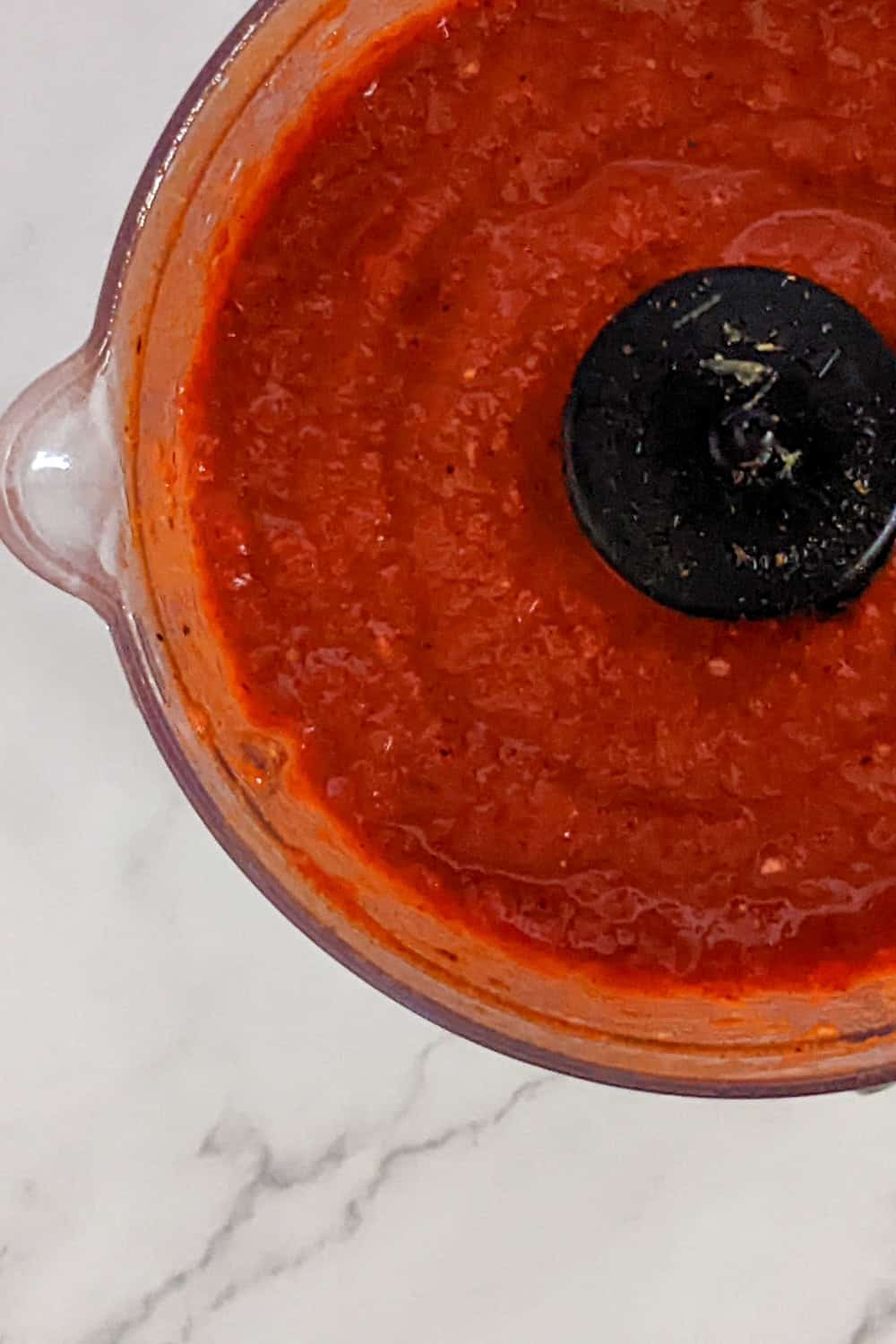
Harissa is a bold and fiery chili paste that hails from North Africa and is especially popular in Tunisian, Moroccan, and Algerian cuisine. Traditionally made with sun-dried hot peppers, garlic, olive oil, and spices like cumin and caraway, this spicy condiment adds depth, heat, and a touch of smokiness to everything from couscous and grilled meats to soups and stews.

Looking for authentic North African recipes? Check out My Moroccan Food and Salima's Kitchen.
A Quick Homemade Spicy Sauce for U.S. Kitchens
While traditional Harissa recipes may require specialty peppers and time-intensive methods, this quick homemade spicy sauce is crafted with the average American pantry in mind.
This is not an authentic recipe—but it is a fast and flavor-packed alternative using pantry staples you likely already have, like tomato paste, smoked paprika, cayenne, and garlic powder. It's perfect for weeknight dinners when you want that signature Harissa flavor without hunting for rare ingredients.
Why This Version Works
This shortcut, Harissa, is all about accessibility. It captures the essence of the classic—spicy, smoky, and deeply savory—while offering a fuss-free method for busy home cooks. From mixing it into mayo for sandwiches, using it as a marinade, or stirring it into grains, this version brings heat and flavor to the table in minutes.
Where to Next?
- Spicy Moroccan-Inspired Harissa Carrot Salad
- Air Fryer Roasted Harissa Salmon with Paprika Potatoes and Brussel Sprouts
- Harissa Egg & Toast with Feta Cheese and Olive Oil
- Spicy Chicken Burger with Harissa Eggplant, Portabella Mushrooms, and Onions
- Spicy Chicken Vegetable Stew with Harissa Tomato Sauce

Mason Jars are a Gem
These air-tight Ball Glass Pint Regular Mouth Mason Jars keep your harissa fresh longer. Another reason to use glass jars is when making sauces that include tomatoes and red bell peppers. Additionally, you don’t have to worry about staining like plastic containers.
Ingredients with Steps
As you can see, not much is needed to make this fantastic harissa spice blend recipe. To begin with, drain well a cup of fire-roasted red bell peppers and blend it with crushed red chili flakes, tomato paste, garlic, caraway powder, coriander, cumin, smoked paprika, salt, black pepper, lemon zest, lemon juice, and olive oil. Voila!
Culinary Glossary
This section provides concise definitions of key ingredients and techniques to enhance understanding and improve cooking skills related to this recipe.
- Harissa - A North African chili paste made with dried peppers, garlic, olive oil, and spices like cumin and caraway. Known for its smoky, spicy flavor.
- Smoked Paprika - A spice made from smoke-dried chili peppers, adding a deep red color and smoky flavor to sauces like Harissa.
- Cumin - An earthy, warm spice used commonly in North African and Middle Eastern dishes. It brings a toasty depth to spicy blends.
- Caraway Seeds - A slightly sweet, peppery seed with a hint of citrus and anise. Traditional in Harissa for its complex flavor.
- Tomato Paste - A pantry staple made by cooking down tomatoes until thick and concentrated. Used here as a base to mimic the texture of traditional Harissa.
- Cayenne Pepper - A hot chili pepper ground into powder, adding spicy heat to sauces and spice blends.
- Garlic Powder - Dehydrated ground garlic, used as a quick substitute for fresh garlic. Adds savory punch without prep time.
See the harissa recipe card for quantities.
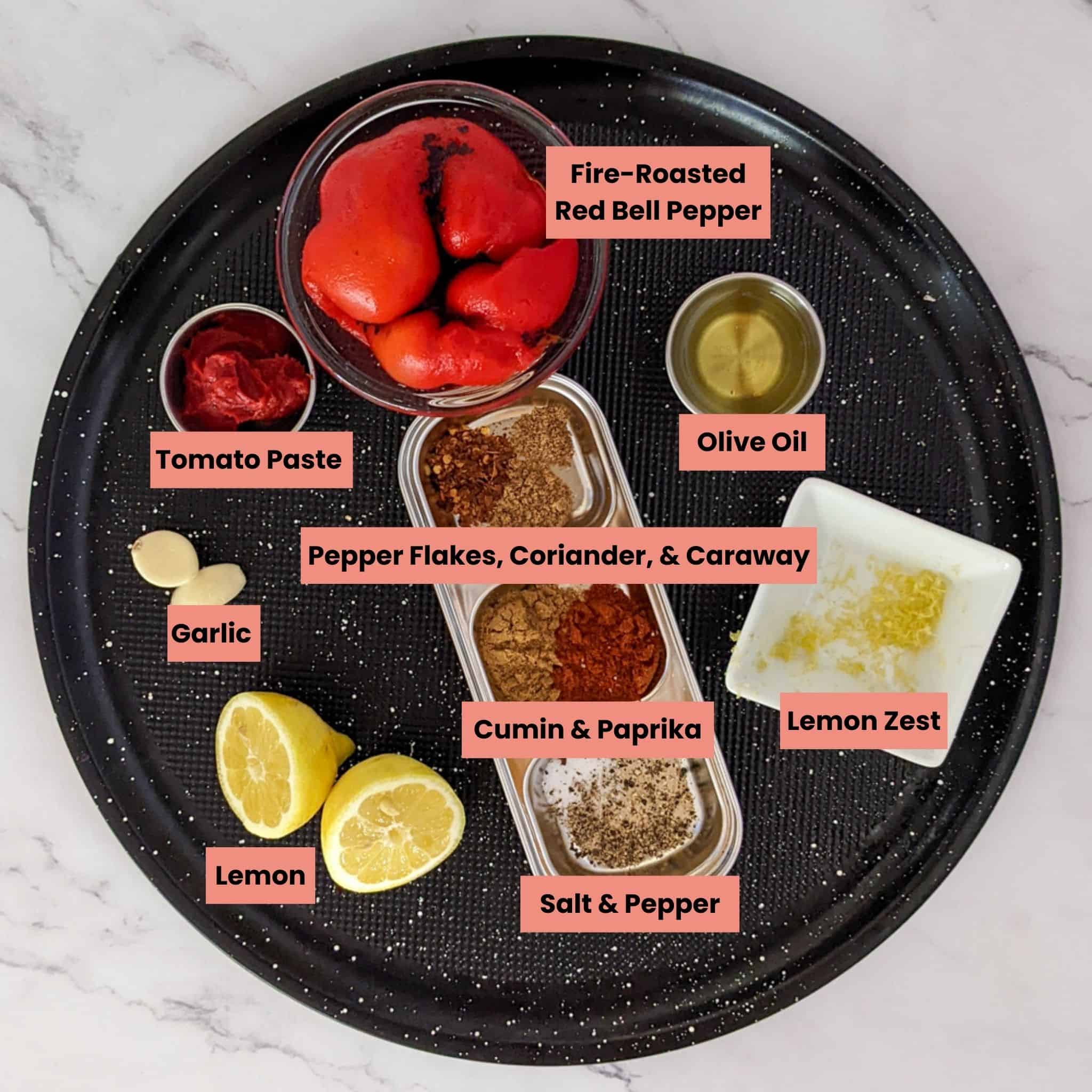
Substitutions
Dairy Free
- Yay! This recipe is already dairy-free.
Gluten-Free
- Bonus! This recipe is also gluten-free.
Vegetarian
- Triple threat! It's also vegetarian.
Convenience
- Fire-Roasted Red Bell Peppers: Use regular roasted red bell peppers from a jar or roast fresh red bell peppers under the broiler and peel them.
- Crushed Chili Pepper Flakes: Replace with ¼ to ½ teaspoon of cayenne pepper, or you can use a dash of hot sauce to add heat.
- Tomato Paste: Use 2 tablespoons of canned tomato sauce, or in a pinch, ketchup can be used—just note it may add a bit of sweetness.
- Garlic Cloves: Substitute with ½ teaspoon of garlic powder or 1 teaspoon of jarred minced garlic.
- Caraway Powder: ground fennel seed is a decent alternative, or you can skip it entirely without drastically affecting the flavor.
- Ground Coriander: Substitute with a little extra cumin or a mix of lemon zest and crushed cilantro seeds if available.
- Cumin Powder: Replace with a chili powder blend or taco seasoning, but check for added salt in blends.
- Smoked Paprika: Swap with regular paprika and a tiny drop of liquid smoke or a small pinch of chipotle powder for that smoky flavor.
- Fresh Lemon: Use 1 tablespoon of bottled lemon juice and a small pinch of dried lemon zest, or simply omit the zest if necessary.
- Extra Virgin Olive Oil: Substitute with any neutral oil, such as canola, vegetable, or avocado oil, though the flavor will be slightly different.
Change Heat Level - Modify the harissa recipe's heat level to your liking and learn more about the Scoville Scale and Chili Pairings.
My Rating: ⭐⭐⭐⭐⭐
Purchased: 07/14/23
Update: 08/19/24
My Review: The KitchenAid 3.5 Cup Food Chopper is a must-have in the kitchen at a great price. It’s compact, powerful, and lightweight, making meal prep easier without taking up much space. I love its one-touch operation, perfect for quickly chopping, mixing, and puréeing. Plus, it's easy to clean. Watch me use it for my Spicy Tomato Farro Risotto and Chili Herb Crusted Rainbow Trout recipes. This chopper is essential, especially if you love cooking with lots of gadgets like me!
Equipment
- Food Processor - I suggest using a food processor because this will be more of a paste than a sauce. In addition, for this harissa recipe, I use a small food processor, the KitchenAid 3.5 Cup Food Chopper, to quickly make a small batch.
- Zester - Used to zest the lemon to enhance the flavor of the lemon pepper dish. I've also used a Microplane Classic Zester Grater for over two decades, plus any recipe that suggests testing; you might see me using it in my videos. Additionally, it's a great tool to have. It can also grate ginger, hard cheeses, and garlic.
Kitchen Must Haves - Find other tools I use here.
My Rating: ⭐⭐⭐⭐⭐
Purchased: OMG, Summer of 2006!
Update: 08/19/24
My Review: Over the past decade, this Microplane has been and still is my favorite! My replacement was once when someone came to borrow it in the kitchen and left it next to an open flame at the Ritz! And it scorched the metal. Honestly, it worked great, but I was young and concerned about aesthetics. Go figure! This was a professional kitchen staple. You can use it to enhance the citrus flavor and presentation of foods, from pureed soups to beautiful French custards, just like my Spicy Green Kale Lentil Soup, which has a delicious lemon broth. It’s the original, and it’s my must-have go-to item.
Storage and Freezing
Refrigerator Storage
Once prepared, store your quick Harissa sauce in an airtight container or glass jar with a tight-fitting lid. Keep it in the refrigerator for up to 10 days. For best results, drizzle a thin layer of olive oil over the top before sealing to help preserve freshness and prevent oxidation. Stir before each use.
Freezing Instructions
If you’d like to make a larger batch, Harissa sauce freezes beautifully. Spoon the sauce into a silicone ice cube tray or tablespoon-size freezer molds. Once frozen solid, transfer the cubes to a labeled freezer-safe bag or airtight container. This allows you to grab just the amount you need without thawing the whole batch.
Shelf Life in Freezer
Frozen Harissa sauce will maintain its flavor and quality for up to 3 months. Be sure to thaw cubes in the fridge overnight or stir them directly into warm dishes like soups, stews, or sautéed vegetables.
Bonus Tip
Avoid freezing the sauce in glass jars unless they are freezer-safe, as the expansion can cause the glass to crack. Silicone trays or freezer bags work best for portion control and space-saving.
Airtight Food Containers
I interchange glass food storage containers with plastic clipping lids or wooden push-ins. I always suggest glass storage containers because they can be microwaved, they hold food without staining, and the glass keeps the food at a more stable temperature, keeping it fresher and longer.
Try the OXO Good Grips Smart Seal Glass Rectangle Food Storage Containers or the Pyrex Freshlock Glass Food Storage Containers.
Cooking Tips!
- Zesting - It’s good to have a bowl or a plastic cutting board underneath to help catch these delicate little strands, and don’t forget to tap the zest to release some extra from the tool. Remember, you only shave the yellow skin; when you see white, stop because the white part tends to be bitter. I also use the Microplane Classic Zester Grater, which has lasted over a decade.
- Removing Seeds to Control Heat Level - If you use Thai chilies, you can deseed to control the heat. When a recipe calls to deseed hot peppers to maintain the heat level, you must remove the rib, also known as the pith, the white flesh of the pepper.
- Usage - Try as a marinade to grill/ bake/ roast tofu, meats, poultry, fish, and vegetables or as a dipping sauce with hummus or pepper condiment.
Frequently Asked Questions
Use on fish. First, season it with salt and pepper, smear on the paste, and place it in the oven to roast. You can also massage it on chicken and throw it on the grill or use it to spice up your side dishes, like harissa carrot salad. You can also use it to make harissa hummus.
Harissa is a spicy North African chili pepper sauce. It is pounded into a paste, hence its name, which means “to pound” in Arabic, which has gained global popularity in recent years. Additionally, its unique blend of flavors and heat makes it an ideal condiment for dishes ranging from couscous to roasted vegetables.
It originated from the Maghreb, Northwest Africa, primarily from Tunisia, although many variations have developed throughout the region. The Maghreb comprises Arabic countries and territories such as Marocco, Tunisia, Libya, Algeria, Mauritania, and the Sahrawi Arab Democratic Republic.
Some make it super spicy, and some have a little kick. Its taste combines savory, smokey, and peppery paste-like sauce with a hint of spices in the background. Harissa recipes vary greatly, but most typically include red peppers, garlic, coriander, cumin, caraway seeds, olive oil, salt, and sometimes tomatoes or other ingredients such as lemon juice or honey.
If made in the Maghreb region, more than likely, they will use Baklouti, a pepper from that region. In addition, This pepper is smoked, pounded into a paste, and mixed with garlic, cumin, caraway, coriander, and olive oil.
The Scoville scale also classifies harissa as medium-hot to hot depending on the type and quantity of chilis used. Despite its spiciness, harissa remains incredibly versatile and can easily adjust according to individual preferences.
In addition, experienced chefs often combine spices and herbs to create their signature versions. You will also likely find this paste at your local Middle-Eastern, African, Mediterranean, Halal, and Kosher markets. Additionally, I’ve even noticed it now at Trader Joe’s.
Both of these are spicy pepper pastes but come from different regions. For example, Zhug is a green hot pepper paste from Yemen in the Middle East, and Harissa, a red hot pepper paste, is from the Maghreb region in North Africa.
Harissa traditionally uses Baklouti peppers, while zhug uses hot green chilies. Unfortunately, I couldn’t find the pepper name used in Yemen. In addition, if you know, please leave a comment. But most recipes will call for Jalapenos or Serrano chilies. Check out my quick zhug sauce recipe!
Zesting is peeling only the skin of the citrus fruit without the white flesh, referred to as pith. In fact, the skin contains aromatic oils and is an excellent addition to recipes to intensify the flavors of a dish.
In addition, a fine grater is the most convenient way to obtain the zest of the citrus fruit, usually referred to as zester or a Microplane. Learn More at Cook's Notebook: Zesting.
To begin with, Preheat the grill. Then, place whole bell peppers on a heated grill. Allow it to char and blister (about 1 to 2 minutes) on each side of the bell pepper. Once 80% covered in char. Then, remove from the heat, immediately place in a glass or metal bowl, and cover with plastic wrap.
Next, allow it to steam in the bowl for 2 to 3 minutes. This will help release the charred skin from the pulp of the bell peppers. Then, remove the plastic wrap, peel the charred skin, and discard. The peppers might still be hot, and you might want to use tongs or gloves. Finally, cut the bell pepper in half and remove the seeds, stem, and white ribs.
Use the oven broiler setting (Preheat and Use at Medium Heat to 450 degrees). Afterward, place the bell peppers on a roasting rack and sheet pan, and put the pan on the middle rack of the oven. Rotate the bell peppers when charred on one side (about 2 to 3 minutes).
Once 80% is covered in char, remove it from the oven, place it in a metal or glass bowl, and cover it with plastic wrap. Allow sitting for 2 to 3 minutes to allow the steam to separate from the skin. Then, remove the plastic wrap and peel the skin off. Discard charred skin. Finally, cut the peppers in half and remove the seeds, white ribs, and stem.
Not actually. When a recipe calls to deseed hot peppers to control the heat level, you must remove the rib, pith, white flesh of the pepper, which holds most of the capsaicin oils.
North African-Inspired Recipes
Looking for other North African-inspired recipes like this? Try these:
- Grilled Zhug Ras El Hanout Lamb Chops and Tomato Salad
- Spicy Greek Chicken Meatball Rice Bowl
- Easy and Healthy Spicy Turkey Meatball Kale Soup
- Quick and Easy Lean Baharat Spiced Bean and Lamb Stew
Recipes with Harissa Sauce
Looking for other spicy recipes like this? Try these:
- Easy Spicy Italian Chicken Sausage Soup with Farro
- Spicy Chicken Vegetable Stew with Harissa Tomato Sauce
- Spicy Chicken Burger with Harissa Eggplant, Portabella Mushrooms, and Onions
- Harissa Egg & Toast with Feta Cheese and Olive Oil
📖 Recipe
Quick Harissa Sauce
Ingredients
- 1 cup fire-roasted red bell peppers
- 1 teaspoon crushed chili pepper flakes
- 1 tablespoon tomato paste
- 2 garlic cloves
- ⅛ teaspoon caraway powder
- ¼ teaspoon coriander powder
- 1 teaspoon cumin powder
- 1 teaspoon smoked paprika powder
- ¼ teaspoon kosher salt
- ¼ teaspoon ground black pepper
- ½ lemon zested and juiced
- 2 tablespoons extra virgin olive oil
Equipment
Instructions
- Add the Base Ingredients: In the bowl of a food processor, combine 1 cup fire-roasted red bell peppers, 2 garlic cloves, and 1 tablespoon tomato paste.
- Add the Spices: Sprinkle in 1 teaspoon crushed chili pepper flakes, ⅛ teaspoon caraway powder, ¼ teaspoon coriander powder, 1 teaspoon cumin powder, 1 teaspoon smoked paprika, ¼ teaspoon kosher salt, and ¼ teaspoon ground black pepper.
- Add the Citrus and Oil: Zest and juice half a lemon directly into the processor. Then pour in 2 tablespoons of extra virgin olive oil.
- Blend until Smooth: Process the mixture until smooth and well combined, scraping down the sides of the bowl as needed for an even texture.
- Taste and Adjust: Taste the sauce and adjust seasoning if desired—add more chili flakes for heat, lemon juice for brightness, or salt for balance.
- Transfer and Store: Spoon the Harissa into a clean jar or airtight container. Store in the refrigerator for up to 10 days or freeze in portions for longer storage.
Video
Nutrition
Subscribe to My YouTube Channel
SUBSCRIBE: 👈To my YouTube Channel to Get Notifications of New Videos.
Have a Question or Comment?
If you have a question or comment about this harissa recipe, please post it below. You will definitely get a quick response. It also helps our other readers to stay informed. Thanks!

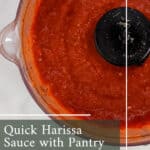


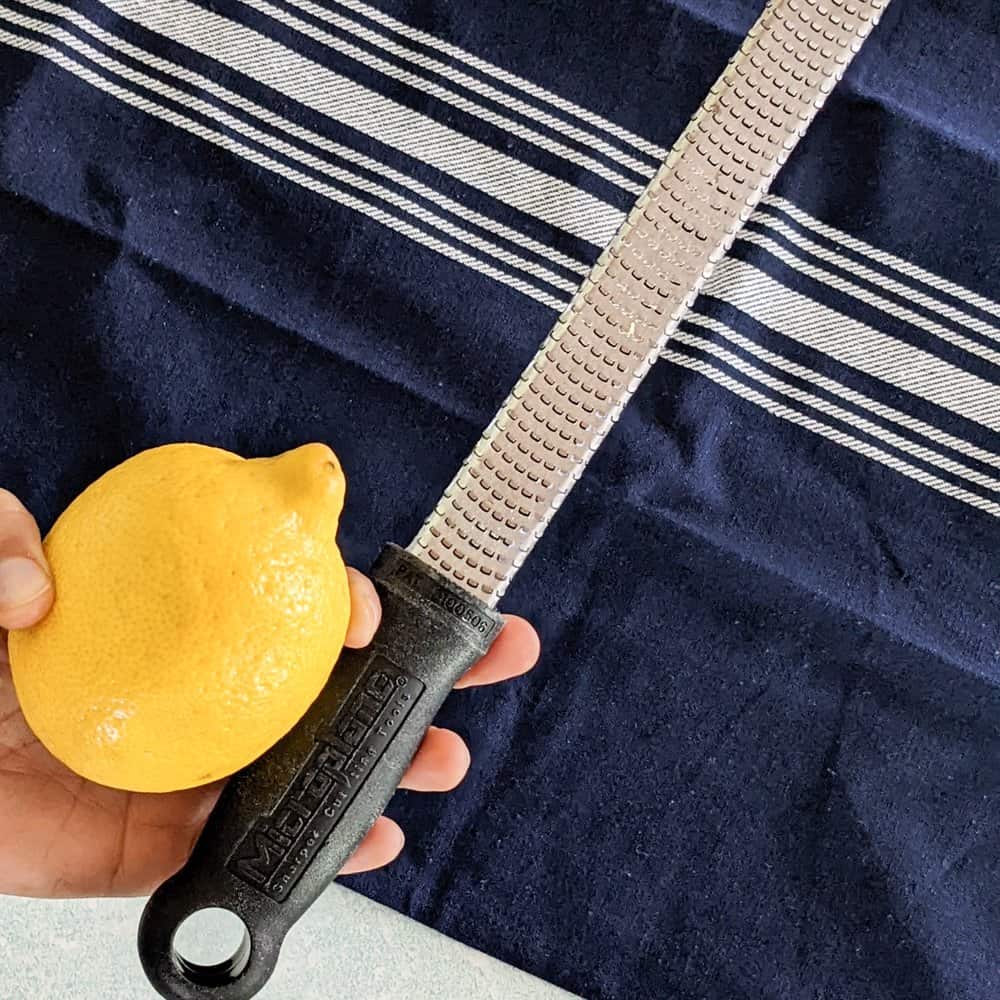
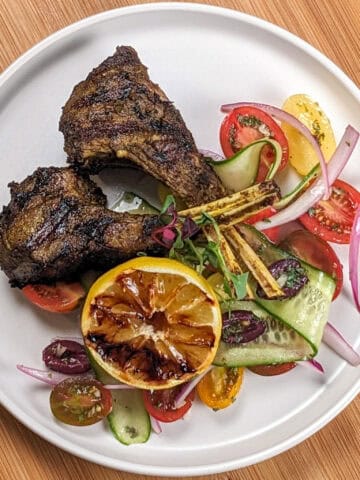
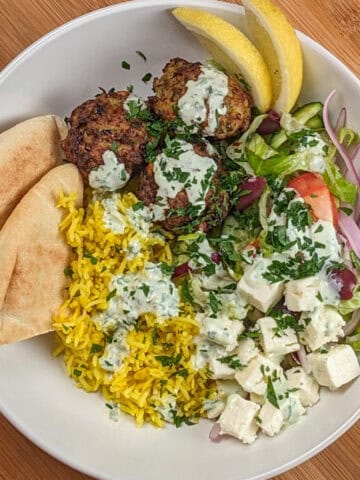

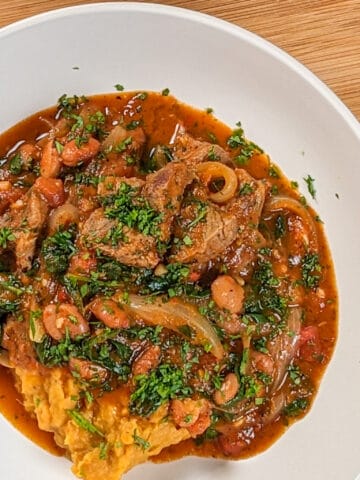

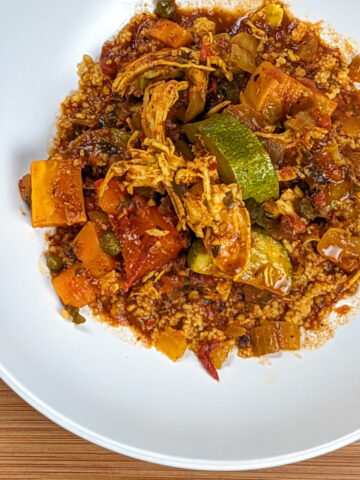
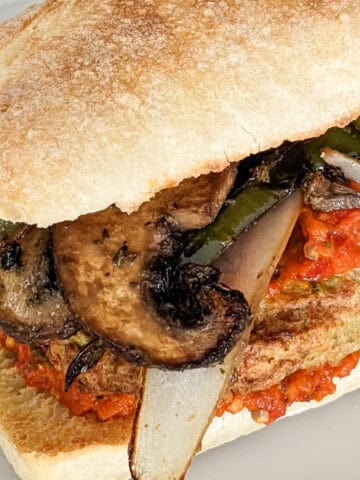
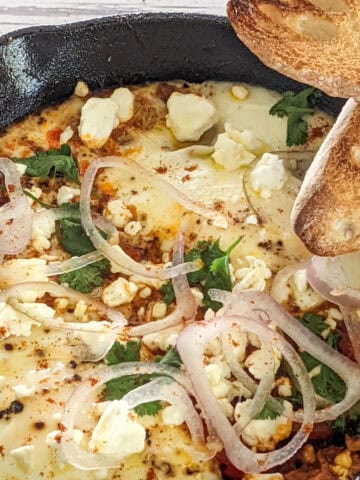
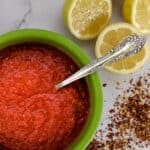
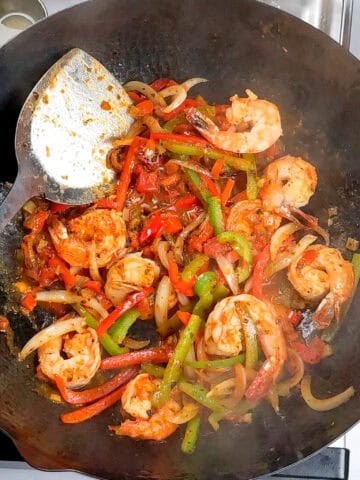
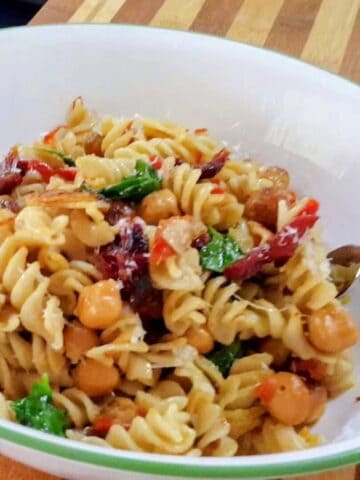
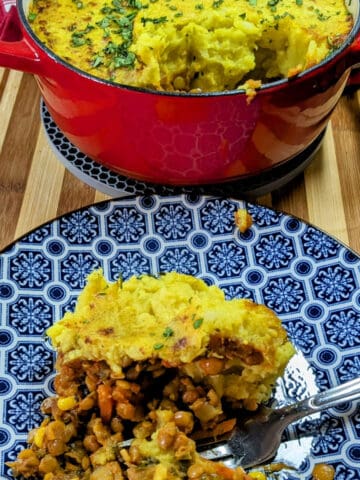
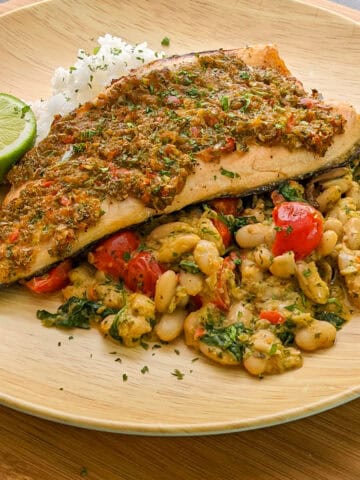
Leave a Reply